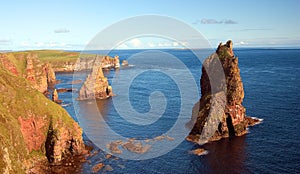- Stock Photography: DUNCANSBY HEAD, CAITHNESS SCOTLAND UK by Loinshoes
- Price: 1$
- Size Facebook: 1702 x 630 px
- Size Twitter: 1500 x 500 px
- Size LinkedIn: 1128 x 191 px
More Facebook, Twitter and LinkedIn Cover Photos
Cover photo info
- Photo title: Duncansby Head, Caithness Scotland UK
- Author: Loinshoes
- Cover photo description:
- Duncansby Head, Caithness Scotland UK Duncansby Head is the most northeasterly part of the British mainland, including even the famous John o' Groats. It is located in Caithness, Highland, in north-eastern Scotland. The headland juts into the North Sea, with the Pentland Firth to its north and west and the Moray Firth to its south. Duncansby Head Lighthouse is situated in Caithness, Highland, in north-eastern Scotland. It is the most northeasterly part of the British mainland. The tidal streams flowing through the Pentland Firth earned it the title ‘Hell’s Mouth’ in the days of sail and it’s still a place where unwary ships can become playthings of the sea. As the waters of the wide Atlantic flow into the North sea and ebb in the opposite direction, they set in motion a welter of eddies, races and overfalls, and in the neighbourhood of the Pentland Skerries, they run at a speed of ten knots. So dramatic are the effects that each of these tide races has been given a name – the Swilkie, the Bore of Huna, the wells of Tuftalie, the Duncansby Bore, and the Merry Men of May. In 1914, during the first World War, a temporary fog signal was set up at Duncansby Head close to John O’Groats. This was replaced by a permanent fog signal after the war. During the Second World War, and on the eve of the invasion of Norway, Duncansby Head Lighthouse was machine-gunned by a German bomber. Fortunately, no one was injured and no damage caused. In 1968 a high power racon
- Image ID:13729902
- Views:1286
- Downloads:4
Keywords for Facebook, Twitter and LinkedIn timeline photos
background
bird
birds
breaks
britain
caithness
cliff
duncansby
england
goelogic
goelogy
head
hikeing
holiday
landmark
landscape
mineral
red
rock
rocks
scotland
sea
seascape
sky
stack
stacks
walking
weekend
north
sea
pentland
firth
cliffs
water
northeastern
northeast
northern
coast
coastlin
headland
orkney
island
cave
grass
duncansby
head














